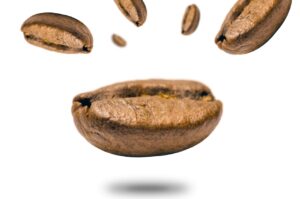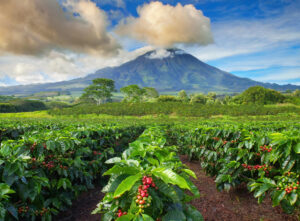Coffee is not just a beverage, it’s a way of life for many people all over the world. You may have heard about the term “coffee roasting” but you may not know exactly what it means. Well, that’s what we will talk about in this blog post. We will cover what coffee roasting is, the different types of roasts, and how roasting affects the flavor of coffee.
Firstly, let’s start with the basics: Coffee roasting is the process of heating coffee beans to transform their physical and chemical properties. By roasting the coffee beans, their inner flavors and aromas are brought out. The process is completed by exposing the beans to heat in a roasting machine, rotating and heating the beans constantly. This cooking process causes a chemical reaction that changes the bean’s flavor profile, which determines the strength, bitterness, and acid levels of your drink.
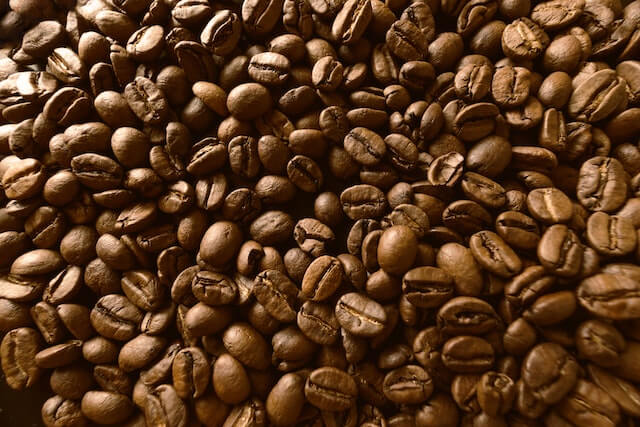
The type of roast a coffee bean goes through depends on the length of time it’s roasted and the temperature at which it’s roasted. There are typically four types of roasts: light, medium, medium-dark, and dark roast. Light, for example, is roasted for a shorter amount of time at a lower temperature, giving it a lighter color and a delicate flavor. Dark, however, is roasted for a longer period at a higher temperature, leading to a darker color with a more robust flavor.
The roast level has an enormous impact on the flavor of coffee. As a general rule, the lighter the roast, the more the coffee’s natural flavors will be preserved. You may experience a lot of fruitiness, acidity, and a clean aftertaste. On the other hand, as the roast darkens, the coffee gets smokier and less fruity – it can even become bitter and burnt. The roast point that’s chosen depends on the consumer’s preferences, as well as the type of coffee bean used.
It’s important to note that the quality of the coffee bean being roasted is just as important as the roasting process itself. The quality of the coffee will play a significant role in the taste of the final product, regardless of how well the beans are roasted. Therefore, it’s recommended to start with quality beans if you want to have excellent coffee.
Lastly, some specialized coffee roasters will use flavor-infused smoke to give the beans a unique and interesting flavor. Imparting flavors such as vanilla, cinnamon, and chocolate, are great ways to create some fun in-house blends that people will love. Some roasters pride themselves in being at the forefront of great coffee blends in this fashionable manner.
What are Roasting Coffee Beans Methods?
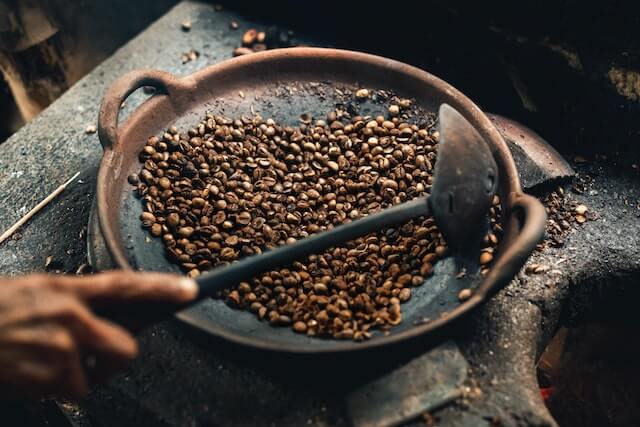
Coffee is a universal drink that wakes you up in the morning, keeps you going through the day, and keeps your hands warm during winter. However, not all coffee is created equally, and the method of roasting makes all the difference. The roasting method transforms raw green beans of coffee into aromatic and flavorful coffee that we all love. Each method of roasting plays an important role in the taste, body, and richness of the coffee. Therefore, let us explore the different roasting methods and their effects on our coffee brews.
Roaster Machines
Roaster Machines are machines used to roast beans of coffee. This machine heats the beans and turns them from green to brown. It also helps bring out their flavors. Roaster machines turn raw beans of coffee into the delicious coffee we know and love. They come in different types and can make coffee light, medium, or dark depending on how long they are roasted for at what temperature.
Home Roasting Techniques
Home roasting techniques are methods you can use to roast coffee at home. They use a machine to heat the green coffee beans and change them from green to brown. This helps bring out the flavor and smell of the coffee. It also makes it taste good! Roasting techniques let you choose how light, medium, or dark you want your coffee. You can do this by controlling how long and at what temperature you roast the beans.
Light Roast
The light roast is also known as cinnamon roast since the beans are roasted until they reach a light brown color. During the roasting process, the beans retain their original sweetness, acidity, and flavor. This type has a mild taste with subtle hints of nutty and fruity flavors. The beans used for light roast are less dense and have higher acid levels that add to the overall flavor. Light Roast is perfect for those who like their coffee light and refreshing.
Medium Roast
Medium roasts are also considered regular roasts since they are the most popular variety of coffee. It is roasted until the beans turn medium brown, and the flavor profile becomes balanced between acid levels and sweetness. The medium roast retains the original flavor of the bean but with added caramel and chocolate notes. The coffee has a balance of acid taste and sweetness, making it a popular choice for a wide range of coffee lovers.
Dark Roast
Dark roast coffee is roasted until they have a dark brown color, almost black. The roasting process caramelizes the sugar in the beans, making them less acidic and bitter. The coffee is full-bodied and has a bittersweet taste with no acidic aftertaste. Dark roast coffee has low acid levels and hence is easy on the stomach. The dark roast coffee is ideal for those who prefer a bolder and more robust coffee.
French Roast
The beans of French Roast are roasted until they turn almost black, giving the coffee a smoky and intense flavor. The intense heat breaks down the starches and protein, creating flavorful compounds that produce a rich and robust taste. The coffee has a heavier body, lower acid levels, and the caffeine content is lower than lighter roasts. French Roast is perfect for espresso drinks and those who want their coffee to be intense and smoky.
Espresso Roast
Espresso roast is one of the darkest and strongest roast varieties. It is roasted until the beans turn a dark brown color with a shiny texture. The high heat creates a rich and bold flavor profile, with mild acid levels and bittersweet chocolate notes. Since it is roasted for a short duration, it has a low caffeine content and a heavier body. Espresso roast beans are perfect for espresso shots, lattes, and cappuccinos.
What is the Difference Between Whole Bean Coffee and Ground Coffee?
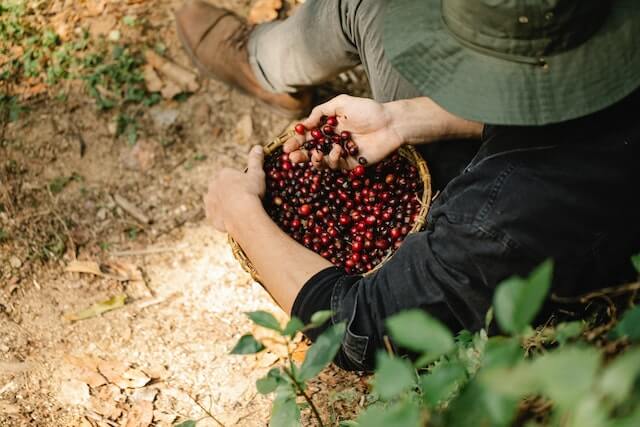
Coffee is an essential drink for millions of people worldwide, and as the number of coffee connoisseurs continues to grow, so does everyone’s selection of coffee. With the ever-increasing options for coffee brewing and the different types, choosing the perfect coffee can be challenging. Among the brewing different methods, choosing between whole coffee beans and milled coffee is a common dilemma.
1. What is Whole Coffee Bean?
Whole coffee bean refers to roasted beans of coffee that were not ground. Coffee beans are the fruit of the coffee plant, which requires picking, sorting, roasting, and packaging. The fruit of the coffee plant grows in coffee cherries that contain two beans each. The beans are removed from the cherries, dried, roasted, and packaged to preserve their freshness. The whole coffee bean offers a better taste and aroma since the oil and rich flavors remain intact until you grind the beans.
2. What is Ground Coffee?
Ground coffee is the result of whole coffee beans after they go through a grinding process. The coffee-roasted beans are grounded to different sizes depending on your preference and brewing method. Grinding the beans releases the oil, which provides them with a rich flavor and aroma. Ground coffee is convenient and easy to use, allowing you to make coffee in minutes.
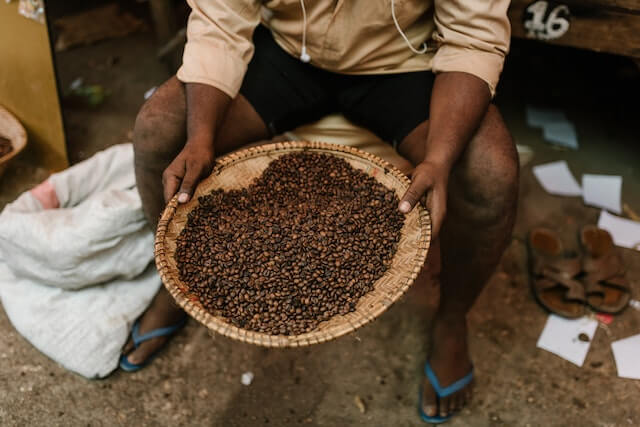
3. Which is Better, Pre-Ground Coffee vs Whole Bean?
The selection of whole coffee beans or milled coffee depends on your preference and the desired brewing method. If you prefer fresh coffee with a rich flavor and aroma, whole-bean coffee is the way to go. The beans remain fresher, and you can grind them as needed for maximum flavor retention. milled coffee, on the other hand, is perfect for a quick and easy cup of coffee. You can store the coffee in an airtight container to preserve its freshness and flavor.
4. Factors to Consider When Choosing between Whole Coffee Bean and Ground Coffee
Different methods of brewing coffee require different grinds. Factors such as taste preference, equipment, and the brewing process determine which coffee type suits you. For example, whether you use a French press, drip coffee maker, or espresso machine, the grind size adjusts accordingly. Whole-bean coffee requires a grinder, which could be an added expense to your coffee budget. Grinding your beans provides you with flexibility over the size and coarseness of the coffee grind, depending on the brewing method.


